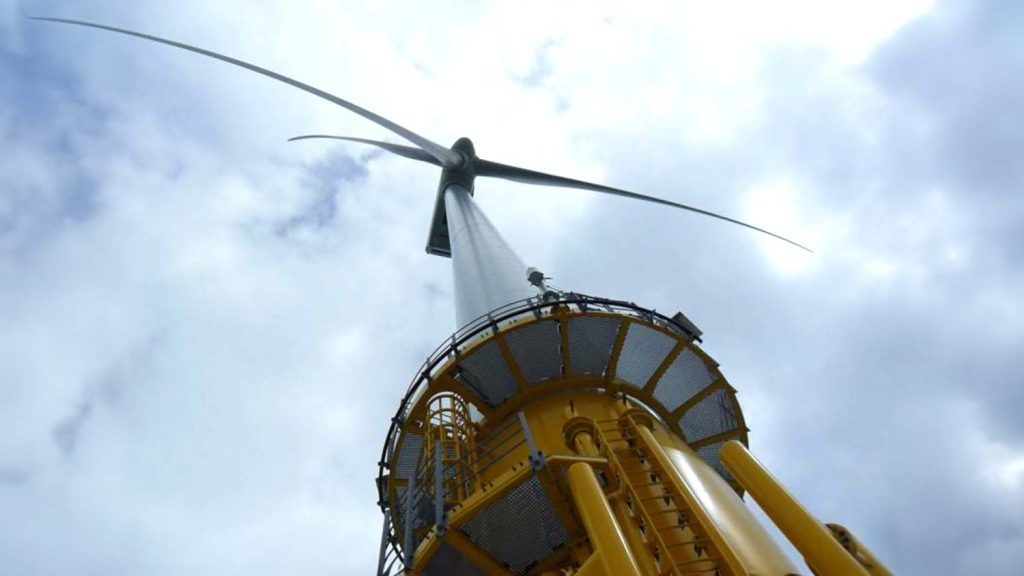Rough seas are inevitable for crews making landings to conduct maintenance on offshore wind turbines, making the design of each wind turbine’s landing area critical.
Boat landings must be durable to cope with bad weather conditions and frequent interactions with heavy vessels, helping keep wind turbines operating correctly.
Specialist offshore wind engineering consultancy, Wood Thilsted, has found the best way to develop such landings, is to test designs using multiphysics simulations to help reduce workload, minimise errors and automate the time-consuming processes.
On average, Wood Thilsted’s design engineering team takes over a month designing each landing design, intending for it to last 30 years through interactions with 200-tonne vessels and extreme weather conditions.
The lengthy validation is necessary due to the complexity of the design. Maintenance personnel must be able to climb from their vessel onto the turbine using a ladder kept on the boat, while the 200-tonne boat is pressed against the landing.
“The challenge with the design is that we have a set of requirements with different load cases, and these are contradicting,” says Wood Thilsted senior structural engineer Louise Bendsten.
“I can spend a lot of time optimising one aspect of the design and then figure out that it does not work for another design case.”
Engineers must also consider possible accidents and unintended collisions during the design process.
Bendsten and the team utilise Comsol multiphysics software in order to model an Ultimate Limit State (ULS) wave and a Fatigue Limit State (FLS) wave.
The ULS wave represents the maximum peak forces that a boat landing is expected to experience throughout its projected lifespan, while the FLS wave stands for the cumulative impact of 30 years of waves and boat transfers on the structure. The ULS and FLS waves are the governing load cases for any potential design solution for safe offshore wind turbine access.
“This allows us to write our own scripts that extract stresses and strains and perform all the results evaluations for the different load cases, freeing up time [for us] to improve the design and focus on [its] challenging parts,” says Bendsten.
A large variety of parts are needed to build a boat landing, but testing and altering each one individually to ensure user safety is time intensive.
By using the Comsol software’s streamlined environment, the engineering team at Wood Thilsted can adjust, test and optimise key measurements including the distance between rungs on ladders, the width of the ladder, the space between fenders and the step-over distance.
The engineering team’s boat landing design relies on steel and features three sets of horizontal ladder supports that are welded to the transition piece of the turbine where it meets the water. This design allows the removal of the boat landing if a replacement is needed before the end of its expected lifespan.
The team chose to automate the simulations, using Comsol to calculate the stress concentration factors of the boat landings. To validate potential designs, the engineering team collaborates with the steel fabrication team for feedback on stress concentration factors and the limits of the materials being used.
They use LiveLink for Matlab, an add-on product to Comsol, to automate processes including applying loads and choosing analysis type. These include simulating normal wave loads and unexpected vessel impacts, which can be automated in Comsol.
Wood Thilsted also uses Comsol Multiphysics’s geometry part library, which allows engineers to create and store designs and reproduce them, editing parts to finish designs more quickly. The boat landing design is mapped out piece by piece and design portions are swapped around with ease, often simultaneously.
“We have a lot of different configurations, so we have created a part library that really allows us to configure our boat landing in many ways, and it is easy to adapt,” says Bendtsen.
The library includes every aspect of the design, including fender support, bucket support, fenders and ladders. Once the design is finished, Wood Thilsted’s 3D Comsol model allows the designer to check the design before it goes into production.
With both costs and risks at stake, boat landings need to be designed as efficiently as possible, and simulation removes the guesswork from the design process. As Bendsten puts it: “Our project teams are agile and fast. We can handle design changes in hours instead of weeks, producing the most steel-efficient designs at fast speeds.”






